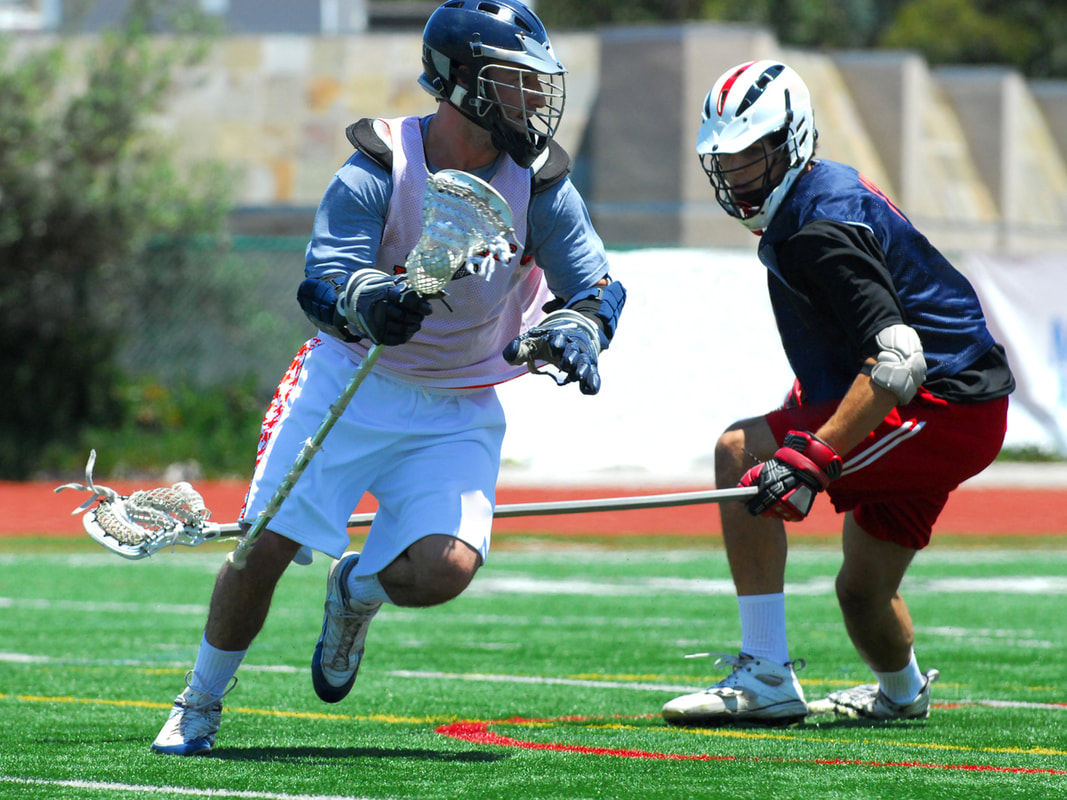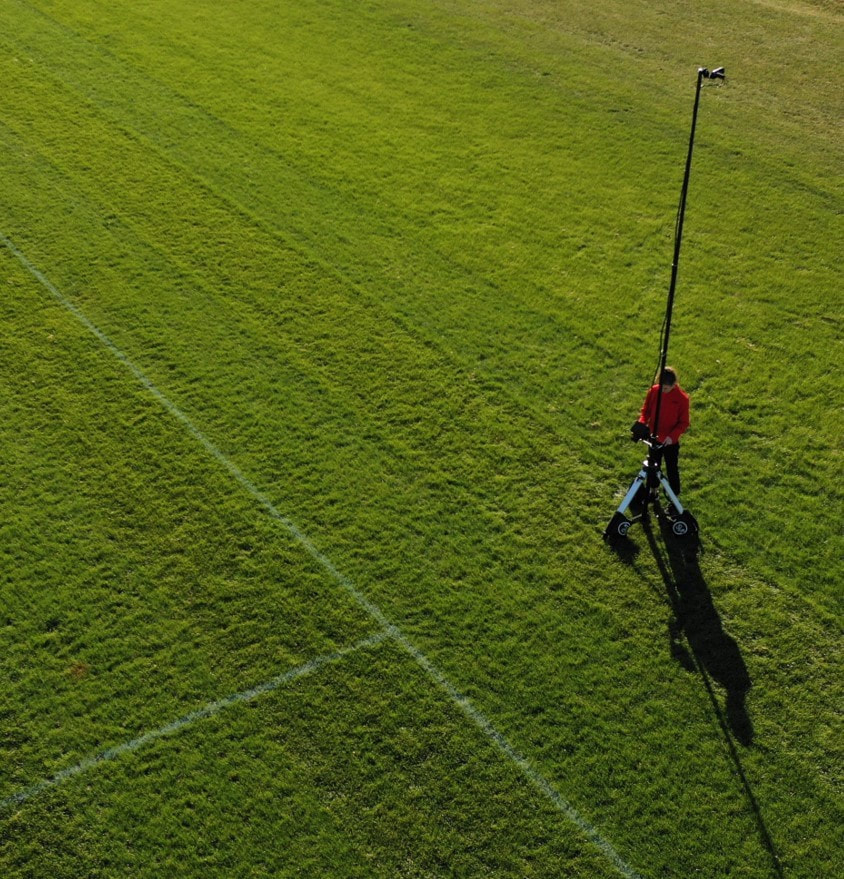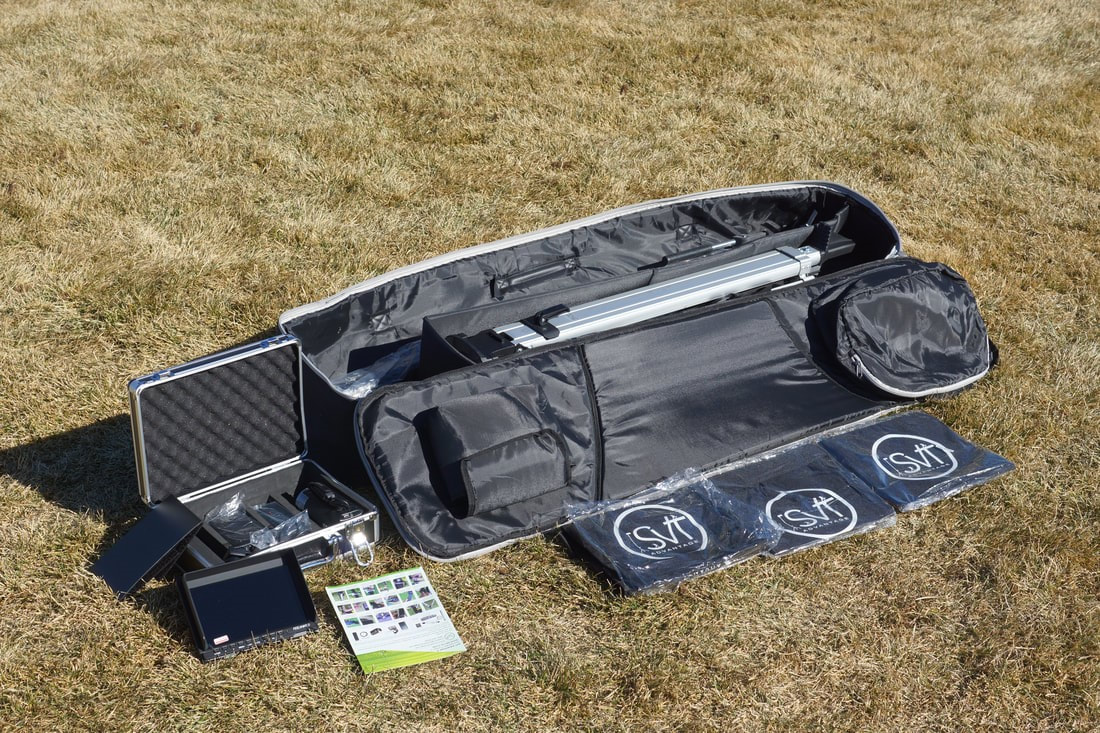How to Film a Lacrosse Game and Stay Ahead of Technology NeedsLacrosse is a growing game in the U.S. and there’s a steady trend of people getting interested and invested in the sport. It’s an awesome game for fans of all ages, with a simple set of rules that can be understood fairly quickly, but strategies and tactics that can take a lifetime to master. With more people learning the game and wanting to get better, there’s a bigger demand for getting important matches recorded to watch later. Days spent watching game film, while physically relaxing, can be just as valuable as practice time in the gym lifting weights or on the field. But what exactly are players getting from spending valuable time sitting and watching a screen? Film isn’t a digital scrapbook there to remember the good times—it’s an important tool to learn from. It gives your team time to work on unity, learn strategy, and invite internal criticism. Team Unity Gathering together in a room to study a film can actually be a valuable team-building exercise. The unity and camaraderie grows, no matter if you are watching a win or a loss. By studying the wins, your team will be able to see the importance of working as a team and the strengths that led them to victory—which will bring everyone closer together. Even in studying the losses, teams can bond by commiserating with each other and looking to find ways to raise each other up. Strategy Sometimes when a player is on the field in the heat of the moment, it’s hard to see the bigger picture. It’s difficult for them to conceptualize where defenders and attackers are, and see what options are available. Without a better understanding of the game and the position of the teams, players aren’t always able to make the best choices while on the field. With a recorded game, the team is able to do something they could never do on the field: Pause the game and study. With some planning, a coach can pause at key moments and start a discussion with their team about what could be done and their overall strategy. Studying and learning from film gives players the ability to see the field and layout while giving them time to develop better playmaking skills. With enough study of strategy and game mechanics in the film room, mindful play becomes second nature on the field. Self Criticism Film offers the chance for reflection and improvement. Even if a coach says nothing while watching the film, a smart player can look at their performance and see the mistakes they are making. These mistakes can lie within their decision-making processes, or even their technical skills. Film gives your players a chance to see room for improvement in their abilities and skills. Just like professional dancers practice in a room with mirrors so they can see their movements and make adjustments, studying film gives your players the same chance to see their progress and gaps in skill. How to Film a Lacrosse Game There are a few options for recording a lacrosse game, but some are easier to set up and better for the players than others. When you’re determining how to film a lacrosse game you need to consider the cost, accessibility, and range of sight of the camera. The cost of a camera can range drastically. You can use everything from a personal phone to a professional HD camcorder. While small handheld cameras are inexpensive, cheap video quality can sometimes get in the way of thorough game analysis. If a player can’t see what they’re doing on the field, the entire purpose of filming is ruined. Camera quality is also important. Fast paced games, where the speed of the ball can travel from 60-100 mph need a camera that can record at 60 frames per second (60p). Many cameras record at 30 frames per second (60i). But this does not provide enough frames for good quality film. Also, having a good quality camera with optical zoom (not digital) is important if you really want good clarity. Keep in mind, a camera with 4K, but using digital zooming, provides worse resolution than a HD 1080p camera with a good optical zoom. Accessibility is important because you don’t want to have a complicated set up that is impossible to use. The more time you spend learning your camera setup, the less time is left for working with your team and helping them improve in meaningful ways. The angle film is taken is one of the most important aspects of recording a lacrosse match. This allows the viewer to understand spacing and distance - which cannot be seen from the field level. This elevated view also allows the viewer to see the different players and their placement in relation to each other. Lacrosse is a team sport, and the team needs to look at how they are doing on the field, even when they aren’t at the center of action. The ability of a defenseman or an attacker to position themselves in preparation for what might be coming their way matters and can be improved on. Handheld You can always grab a small handheld camera, sit on the sidelines, and hit record. While this option is cheap and easy, it might not be the best choice for your players. When you’re sitting on the sidelines, or even in the bleachers, your view of the field is limited. You might be able to focus on the action surrounding the ball, but lacrosse is complicated and a lot of the most important movements and actions are done when the ball is nowhere near the player. Another downside of using a handheld camera is stability in the video quality. Lacrosse games last at least 90 minutes, and managing a camera for that long can become a feat of strength. Your arm will start to droop and wobble, and it can become tiring trying to keep up with the action. Players can’t learn how to be better if the footage lacks focus or stability. Tripod A handheld camera on a tripod gives you the stability to record for a long period of time with a stable shot at a cheap cost, but it also has one major downfall: the angle of the recording. Most camera tripods on the market only raise up to about five feet. This means that while the shot might be more stable than a handheld camera, the film is still going to have an extremely limited range of sight. Camera Pole and Tripod For some teams, especially high school teams, they practice and play on the football field that is surrounded by high bleachers and set up a tripod at the top of the bleachers. They do this because a camera that is high over the field is able to give the best view of the action. The camera can easily see the full field, and give stable footage tracking the action of the game as a whole. But what about the majority of teams that don’t practice or play in a football stadium? For those who practice in open fields that might have a small set of bleachers nearby, a camera pole and tripod is perfect for you. The camera pole allows you to have a camera 16 feet above the field which gives you better angles to see all of the action in HD quality. So, what is your best option for recording a lacrosse game? Check out SVT Advantage. Why Choose SVT Advantage? While there are a few other options to record your games, SVT is the best choice for you and your team. With our different package options, there is a solution ready for you. High Quality Footage SVT’s camera system, utilize camera technology that provides high quality film. Our camcorders utilize 30x optical zoom (not digital cropping) to capture footage. This leads to better image quality when zooming. They also don’t utilize fish-eye lenses (found in many action-style cameras), which distort the playing field and perceived distance between players. Our cameras also record at 60 frames per second (60p), providing a clearer video for these fast-paced sports. Easy to Transport SVT’s camera system, pole, and tripod are made from heavy-duty poly-webbing with water-resistant metal parts. Despite the amount of quality materials that we include in our packages, our system also breaks down so that it can fit in the back of your car. At only about twenty pounds, it’s easy to carry from your car to the field. Easy to Use You don’t need a background in film to understand how to use our products. Once the system is set up on the field, it can be managed by anyone. That means that if you’re a coach, you can choose to spend your time on the sidelines coaching your team where you are needed, rather than huddled by a camera. Quick Setup No one wants to have to show up super early just to set up a tripod or have to spend an hour alone on the field putting everything away. That’s why our system is quick to both set up and take down. Within minutes, you can be ready to record your lacrosse match and get professional quality video. Fast Pan and Tilt System Lacrosse is a fast sport and with a few quick passes, the ball can cross a field and be a headache to track. That’s why our product has a fast pan and tilt system. No matter where the action is taking place, the Tournament Traveler 4 system from SVT Advantage is able to keep it in sight so you don’t miss a single moment of action. Your team can benefit from having a film day. With even a few hours spent analyzing and looking over game footage, you will be able to find where you need to focus and improve your game. There’s one clear best option when it comes to recording lacrosse games: Turn to SVT Advantage. Our products are made with quality and cost in mind so that you can get HD footage from your game to study and learn from. Contact us to learn how you can easily and affordably record your game.
0 Comments
Organizing Good Quality Film For Your TeamIs capturing good quality film a perceived hassle for your sport team or club? You wouldn’t be alone. Many coaches and parents struggle with this. Just finding equipment can be a challenge let alone the day-in and day-out set-up, filming and uploading. Add those worries to concerns of coaching, travelling or just making sure your child brought the right matching socks and their water bottle to the game - it can be a little overwhelming. However, the benefits of having good quality elevated film are substantial. Players perform better when they visually see what they are doing through good film review. Players at all levels are using video now because it is so impactful. If you are struggling with organizing your filming activities, or just want to figure out the process, there are a few tips and best practices. We’ve put together this short blog to help you take the hassle and stress out of recording lacrosse, soccer, rugby and other sports. Team Meeting At the beginning of the season, add the topic of filming to the team meeting agenda. Make sure to discuss the points below and outline responsibilities. Equipment Selection Committee We’ve covered this is different blogs, so we won’t spend time on this here. Below is a video that outlines the important items to consider in filming sports and selecting the sports video recording system that is right for you. This video focuses on recording soccer, but the content is applicable to filming many other sports. Set-Up Crew Assign one or two parents as the set-up crew. We would recommend this crew be responsible for transport as well as the set-up and take down of the camera tower. Keeping this assignment to only one or two parents makes sure the camera tower is set up correctly, in the same way, and that items are not left behind. It also speeds up the set-up time since those setting it up become very familiar with the camera tower. We typically plan 10-15 minutes to set up a camera tower even though it only takes about 5 minutes. Filming Crew Once the camera tower is up, filming is fairly easy. There may be some systems that are a little more complex. But for the SVT Advantage system, the filming is actually fairly simple. Many teams have youth film. The hardest part about filming the game is making sure that you let the person filming know what you want to capture. If you are using the film to capture positioning or other tactical aspects – make sure the person filming the sport understands what you are trying to see. If you are capturing highlight film of a single player, make sure to let the person filming is aware so they can zoom in and capture better detail, especially on the far side of a field. Upload Crew Once you have the game footage, assign a person to handle uploading it (maybe after you review it or do film study). Many teams have one person responsible for this. This is not hard to do – just need to determine where you will upload the video. Many teams upload to hudl which provides many great tools and highlight tools for the team. These simple steps will make filming your sport manageable. Recording sports can provide great insights for your players as well as improve recruiting opportunities. SVT Can Help Having a strategy for recording your games will significantly reduce hassles and confusion. We at SVT look forward to helping you capture your games. SVT provides economical and very mobile camera towers to help you record soccer games easier. Why should you choose to go with SVT? We work with clubs and teams across the US and several other countries. We have several packages to choose from. Our Package 3 is the most popular and consists of a strong, lightweight aluminum tripod with a sturdy 16-foot carbon-fiber composite camera pole, plus a monitor and remote. We provide power packs and all of the cables and cords that you need to make the system work together. Once you purchase our system – use it as much as you like. There are no contracts. Contact us today for more information. Getting Noticed With a Quality Recruiting VideoCollege and professional coaches get thousands of emails in their inboxes every single day—and since they can’t be on the sidelines of the next match of every prospective athlete they have their sights on, game film or a highlight reel is the next big thing to catch their attention and win them over.
Whether you’re a recruit on a coach’s radar or want to be on their shortlist for future recruits, a quality highlight video can help you make a good first—and lasting—impression with a coach. Why Make a Highlight Reel? This highlight reel can help put you first, in front of hundreds of thousands of athletes out there who have reached out to those particular coaches and have not provided a highlight tape. It allows for a first impression. This video allows the coach to initially evaluate you based on your best moments. This is your firm and strong handshake to impress a college or pro coach. If you’re showing them what you think is your best playing on the field, then they can have a great initial perspective of how you play as a player. It can be the only impression. If you live across the country from your dream school or if the coach you’re contacting already has a full schedule for tournament visits, seeing you play in person might simply be out of the question. A highlight recruiting video can be the best chance for them to see you play. If a coach is impressed already with your video, they can then move to arrange a game in-person to evaluate you better. How to Make the Perfect Highlight Video Making a highlight recruiting video means taking hours and hours of playing footage and cutting it down to just a few minutes. In this section, we’re going to take all the aspects a recruiting video needs and narrow it down to the best. This initial video can really help you nail your first impression with any coach. 1) Keep it short and sweet: A highlight video should be around 3-7 minutes long—never longer than 10 minutes. In those mere minutes, you should be able to fit around 10-20 short clips of your best game action while on the field/court, etc. Remember, these recruiters or coaches are having to go through hundreds of these videos of potential players, trying to look for the needle in a haystack. To help you leave a resonating good impression, you’ll want to not make your video work for them by being less work for them.. 2) Put your best foot (play) forward first: Did you score a game-winning touchdown in the last three seconds of the State Finals? Did you do a bicycle kick and score upper-90? Hit a three-pointer right as the buzzer was going off to secure your team a place in the semi-finals? Your most impressive moments caught on film should be placed first. You only have, at most, around 30 seconds to catch a coach’s attention and prod them—no implore them—to keep watching. By placing your best moments as the first clips in your video, you’ll force them to move the mouse away from the pause button and stay locked in. 3) Show more than just one aspect of your athleticism: Although you might be known for your free-kick taking ability, it’s important that you also show how versatile of a player you are. Make sure to include not only your top 5 best goals, but also that (completely legal) slide-tackle defensive play that saved your team from getting scored on or the way you sprinted the entire field length to win the ball back after you’ve lost it. It’s okay to not show perfection the entire time. A coach wants to see how you act in-game and how you react to certain situations. So, you’ve made a poor pass—mistakes happen, no player is perfect. It’s what you do after the play is made. How do you react? Do you put your head down and jog back—or do you get off the ground and sprint after the opponent who now has the ball? These are important aspects of the game that a coach wants to see, too. 4) Keep video effects to a minimum Although you may be tempted by graphics, music, and special effects, don’t let that temptation get the best of you. A coach isn’t interested in how savvy you are with iMovie. Aside from the every-so-often graphic of an arrow or circle indicating where you are on the field, (very helpful for a coach instead of always looking for your numbered jersey) you should try and keep the extras to a minimum. You should also include your name and contact info (your email or phone number)—possibly your team’s name and their coach’s contact information (name, email, and phone number) at the first slide or first few seconds of the video—and the last. Remember, these coaches have most likely never met you before. They don’t know what you look like and again, receive hundreds of thousands of videos each day. Adding this touch to your video can help them identify who you are and connect you back to your email and Player Profile (see next tip). Also, be careful with your music selection! You can turn a coach off to watching your video with the song you pick. When in doubt, background music should also be left off—most coaches often mute the volume, anyway. However, if you feel that you must add something, stick to instrumental tracks that have no singing or rapping so the coach doesn’t get distracted. You also wouldn’t want to choose a song with profanity—not only does this look unprofessional—but this can turn a coach off to view your video, especially if you’re submitting to a religious school! 5) Back it all up with a quality email: You wouldn’t just email your resumé attachment in response to a job application and leave the rest of the email body blank. Normally, you include a cover letter or a short message saying who you are and why you’re interested (and qualified) for the position. With sports, it should be exactly the same approach. When you send off your highlight reel, you should also include an intelligent, formal, and yet personalized e-mail ready with your Player Profile listing all of your achievements (sport-related) to-date, your quality highlight video, and a written invitation for the coach to see your next tournament or game. It’s important that you leave the conversation wide open and make sure all of your information is correct (tournament, date, field, etc.) Most important of all, think of this invitation as your first impression. So please, please, please write the correct name of the coach (whether it’s the assistant or head) that is aligned with the email and school. There’s probably nothing that has a coach deleting an e-mail quicker than reading the first line of it and having their name wrong (watch spelling, too), the name of the school wrong or just a poorly written e-mail in general. Last-Minute Tips Before you hit send, make sure you’ve checked off these last-minute tips when it comes to your recruiting video. Your video is your best foot forward and the highest chance of getting a response or sparking interest from a coach. Here are a few last-minute tips to include: In-Game vs In-Practice
Get a good quality camera set-up and set it up correctly
Track the ball and the player
Show Quality Performance with a Quality Video A recruiting video is where a player puts their performance where their mouth is. You might be college-material and know how to talk your way into a meeting but you might not have the footwork to back it up. Offering up your highlight video not only gives coaches the opportunity to visually see you play and entice them to watch more, but it also shows them that you're confident in your own abilities to show them who you are and how you play, right off the bat. SVT Can Help Highlight videos are essential for coaches to be able to see you. Most college coaches receive large quanitites of emails from players hoping to have a chance to make their team. To stand out – you need good video. SVT provides economical and very mobile camera towers to help you record soccer games easier. Why should you choose to go with SVT? We work with clubs and teams across the US and several other countries. We have several packages to choose from. Our Package 3 is the most popular and consists of a strong, lightweight aluminum tripod with a sturdy 16-foot carbon-fiber composite camera pole, plus a monitor and remote. We provide power packs and all of the cables and cords that you need to make the system work together. Once you purchase our system – use it as much as you like. There are no contracts. Contact us today for more information. |
AuthorSVT Advantage Archives
May 2023
Categories |





 RSS Feed
RSS Feed